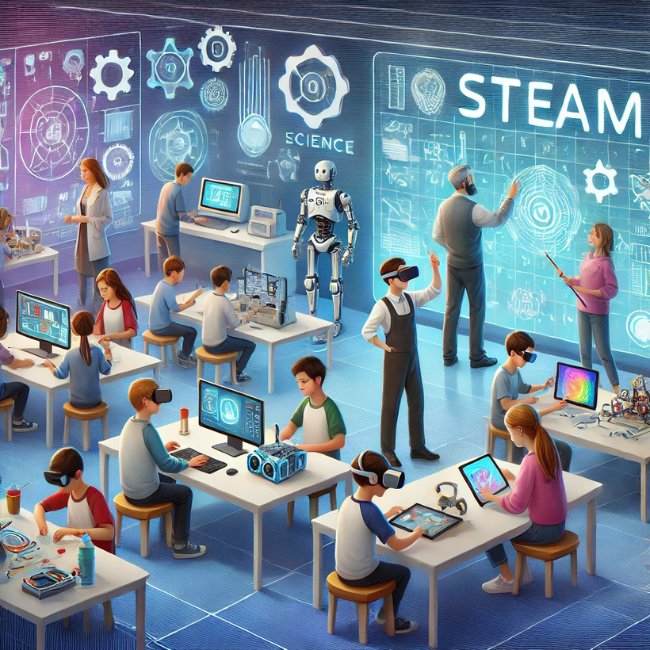STEAM Education: The Future of Learning
STEAM (Science, Technology, Engineering, Arts, and Mathematics) is transforming education by integrating creativity and design thinking into traditional STEM subjects. This approach nurtures innovation, critical thinking, and problem-solving skills, preparing students for a rapidly evolving job market.
Why is STEAM Education Important?
For years, education has focused on preparing students for existing jobs, but what about careers that don’t yet exist? Today’s world demands a learning environment that is fluid, dynamic, and relevant. Learning isn't confined to separate subjects—science, technology, and art naturally blend in the real world. STEAM education breaks down these barriers, fostering interdisciplinary thinking and real-world problem-solving.
By integrating subjects and assessments, STEAM disrupts traditional learning models, making education more engaging and meaningful. It encourages students to explore connections between disciplines and apply knowledge in practical ways, better preparing them for the future.
What the Research Says
Studies highlight the positive impact of STEAM education on student performance and engagement:
- Improved Science Achievement: A 2016 study found that just nine hours of STEAM instruction improved science learning outcomes in high-poverty schools (Brouillette & Graham).
- Enhanced Literacy & Math Skills: Research from 2014 showed that integrating STEAM with literacy positively affects cognitive development and academic performance (Cunnington et al.).
- Arts Integration & Academic Performance: Another study found that students who engaged in arts-infused language curricula outperformed peers in math and language arts (Inoa, Weltsek, & Tabone).
- Critical & Creative Thinking: A global study published in the Journal of Educational Change revealed that STEAM fosters interdisciplinary learning and enhances teacher collaboration (Harris & de Bruin).
The STEAM Model: Key Components
The STEAM framework is built on four essential principles:
- Integrated Learning: Lessons must intentionally connect academic standards, assessments, and practical applications.
- Cross-Disciplinary Instruction: True STEAM experiences involve teaching and assessing multiple subjects together.
- Inquiry & Collaboration: The focus is on hands-on learning, teamwork, and project-based problem-solving.
- Authentic Arts Integration: The arts must be a meaningful component, not an afterthought.
For successful implementation, schools need:
- Collaborative Planning: Teachers from different disciplines must work together to design interdisciplinary lessons.
- Flexible Scheduling: Schools should allow time for hands-on, in-depth exploration.
- Professional Development: Educators need training in STEAM principles and techniques.
- Standards Alignment: Curriculum and assessments should reflect integrated learning objectives.
How to Implement STEAM in the Classroom
STEAM follows a six-step approach that can be used for lesson planning and classroom instruction:
- Focus: Identify an essential question or problem to explore.
- Detail: Examine contributing factors, background information, and relevant skills.
- Discovery: Research current solutions and gaps in knowledge or practice.
- Application: Develop new solutions using learned skills and creative problem-solving.
- Presentation: Share work, receive feedback, and refine ideas.
- Link: Reflect on the process and make improvements based on insights.
The Future of STEAM Education
As technology and creativity become increasingly intertwined, STEAM education will continue to evolve. Emerging trends include:
- Virtual & Augmented Reality (VR/AR): Enhancing interactive learning experiences.
- AI & Creative Computing: Using artificial intelligence for digital music, art, and storytelling.
- Interdisciplinary Learning: Applying artistic creativity in science, architecture, and engineering.
- Girls in STEAM: Expanding mentorship and opportunities for young women in tech and creative fields.
STEAM education isn’t just a teaching method—it’s a mindset shift that prepares students for an ever-changing world. By embracing this approach, schools can cultivate a generation of innovative thinkers, problem-solvers, and creators.
Are you ready to shape the future of education? Let’s bring STEAM to the forefront of learning!
